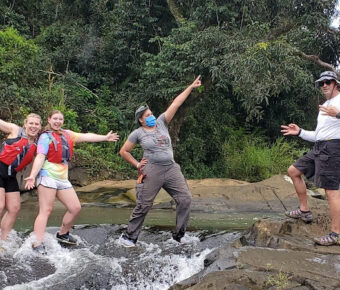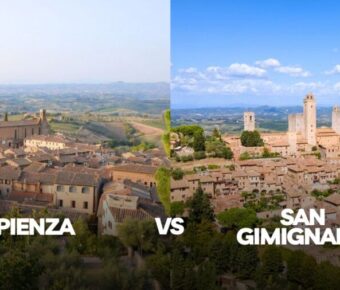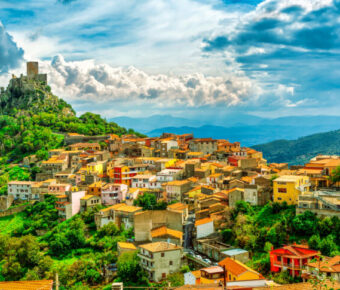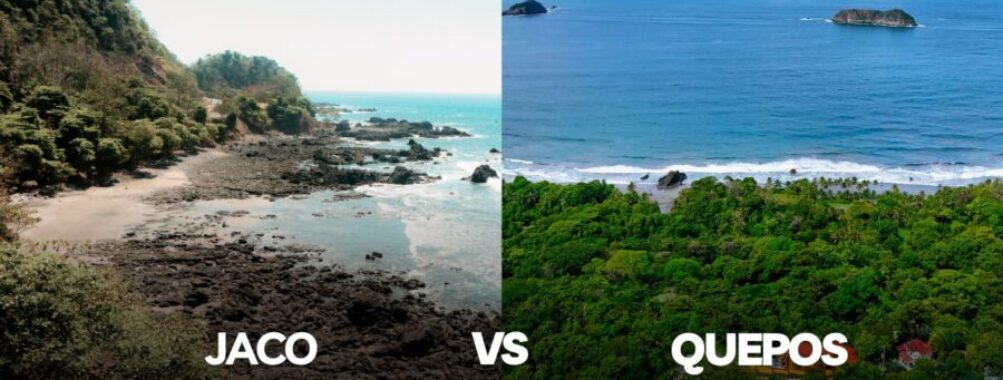
Jaco vs Quepos: 5 Key Differences to Choose Your Perfect Costa Rican Beach Destination
Choosing between Jaco and Quepos in Costa Rica can feel like picking between two gorgeous jewels in Central America’s crown. Both coastal towns offer unique experiences for travelers seeking a taste of Costa Rica’s pura vida lifestyle.
Jaco offers lively nightlife, surfing-friendly beaches with dark gray sand, and more tourist amenities. At the same time, Quepos provides better wildlife viewing opportunities and serves as the gateway to Manuel Antonio National Park. The beaches near Quepos are generally considered more attractive for swimming and relaxation, making it a better choice for families with small children.
Both destinations are relatively close to each other on Costa Rica’s Pacific coast, so you don’t have to choose just one. Jaco sits about an hour closer to San José, making it slightly more accessible for travelers with limited time. Meanwhile, Quepos might give you more magical wildlife encounters for which Costa Rica is famous.
Contents
- Exploring Costa Rica
- The Geography of Jaco and Quepos
- Climate Considerations for Travelers
- Jaco: A Vibrant Beach Town
- Beach Activities and Tours in Jaco Beach
- Nightlife and Dining in Jaco
- Accommodation Options in Jaco
- Quepos: Gateway to Manuel Antonio
- Cultural Experiences and Fishing Tours
- Manuel Antonio National Park Proximity
- Quepos Lodging and Rates
- Planning Your Itinerary: Jaco to Quepos
- Transportation Options and Tips
- Adventure Tours: From Surfing to Rafting
- Family-Friendly Activities
- Understanding the Costs
- Price Comparison: Jaco vs Quepos
- Budget Planning for Tours and Activities
- Lunch and Dining: What to Expect
- The Great Outdoors: Wildlife and Nature
- Encountering Wildlife in Natural Habitats
- Conservation Efforts and Eco-Tourism
- Essential Travel Tips
- When to Visit: Best Seasons for Jaco and Quepos
- Packing Essentials: Camera, Hat, and More
- Language and Communication: The Role of a Bilingual Guide
- Frequently Asked Questions
- What are the main differences between Jaco and Quepos for a vacationer seeking an authentic Costa Rican experience?
- Which area offers better adventure tourism opportunities, Jaco or Quepos?
- Considering safety and variety, how does the nightlife compare to that of Jaco and Quepos?
- In terms of proximity to natural attractions, how do Jaco and Quepos measure up?
- What are the accommodation options in Jaco compared to those in Quepos?
- Can visitors expect a significant difference in the local cuisine experiences between Jaco and Quepos?
- More Travel Guides
Exploring Costa Rica
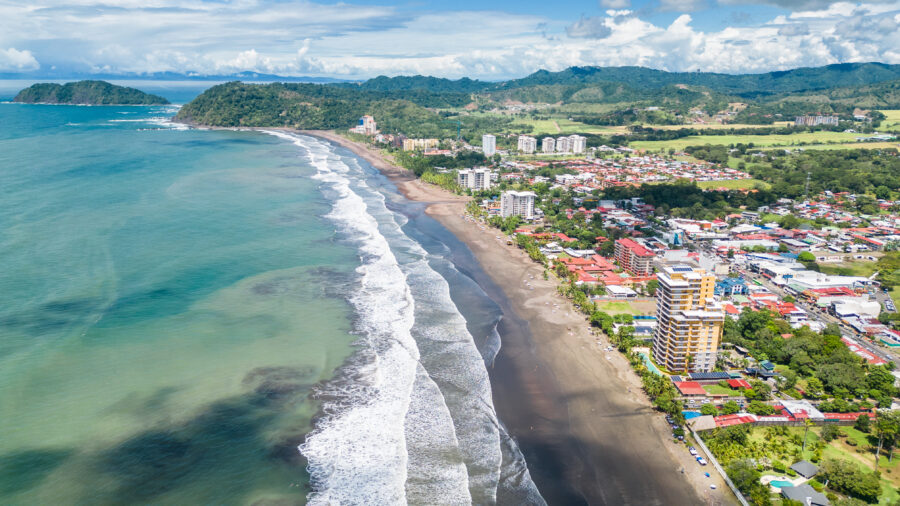
Costa Rica allows travelers to experience quiet beach towns and lively coastal cities. Jaco and Quepos present two distinct flavors of this beautiful country, each with its geography, climate, and visitor experience.
The Geography of Jaco and Quepos

Jaco is about 1.5 hours from San Jose, making it one of the most accessible beach destinations in Costa Rica. The town features a long, straight beach with dark gray volcanic sand and impressive waves attracting worldwide surfers.
The beach isn’t the prettiest in Costa Rica, but the convenience can’t be beat. The town has developed rapidly, and along its main strip, there are plenty of restaurants, shops, and nightlife options.
Quepos, located further south, is the gateway to Manuel Antonio National Park. The town sits on a hilly area overlooking a small harbor. Unlike Jaco’s straight coastline, this region features smaller, more protected coves and beaches framed by jungle-covered hills.
The hotel’s proximity to the national park means better wildlife viewing opportunities. You’ll often spot monkeys, sloths, and tropical birds from your balcony.
Climate Considerations for Travelers
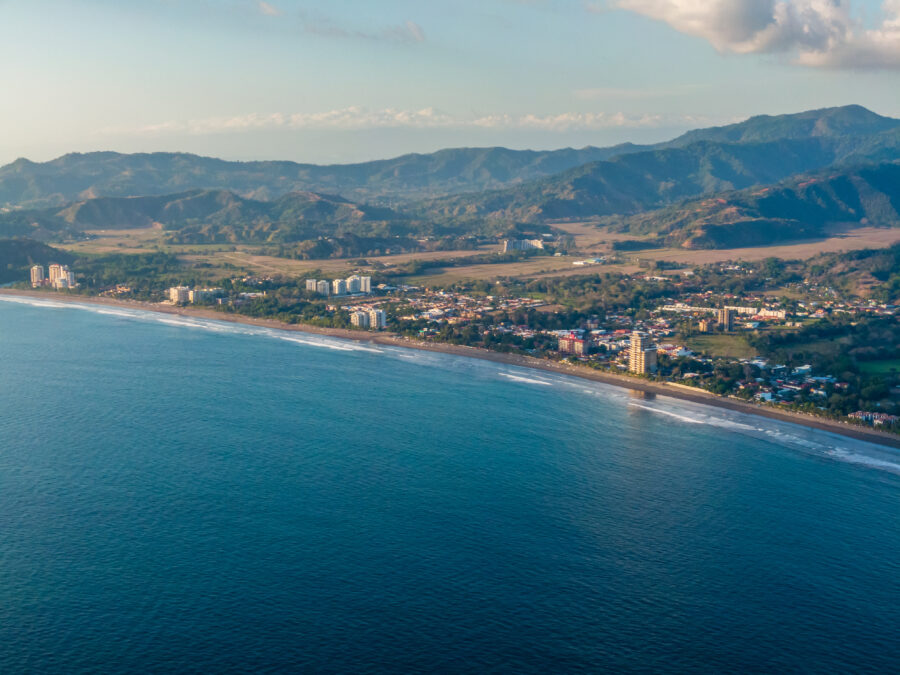
Both areas experience Costa Rica’s tropical climate, but with some notable differences worth planning around. Generally, December through April marks the dry season when minimal rainfall and temperatures hover in the 80s°F.
May through November brings more rainfall, with September and October being the wettest months. However, even during the rainy season, mornings typically stay sunny with afternoon showers.
Jaco tends to be slightly hotter and drier than Quepos. The lack of tree cover around Jaco’s beach means you’ll feel the full force of the tropical sun. Pack plenty of sunscreen!
Quepos and Manuel Antonio benefit from more shade thanks to the lush forest. The higher elevation and forest coverage create a slightly cooler microclimate. The heavy vegetation also means higher humidity and more mosquitoes, so bring repellent when planning your trip to Costa Rica.
Jaco: A Vibrant Beach Town
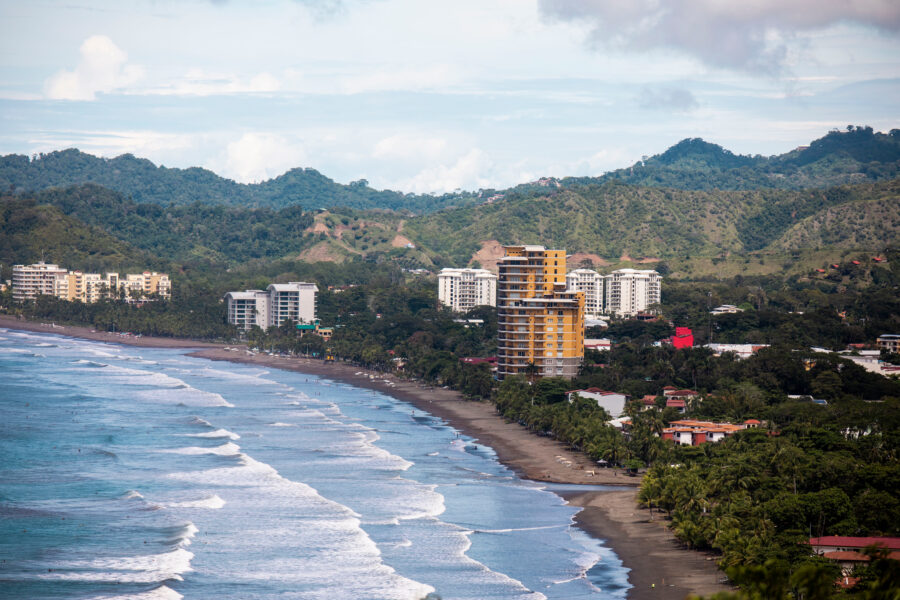
Jaco has become one of Costa Rica’s most popular beach destinations with its energetic atmosphere and various activities. The town offers a perfect mix of surfing culture, nightlife, and comfortable accommodations for travelers seeking adventure and relaxation.
Beach Activities and Tours in Jaco Beach

Jaco’s dark grey sand beaches are famous for their excellent surfing conditions. The high surf makes it a paradise for experienced surfers, though beginners can find lessons at many local surf schools. If you’re traveling with family, be aware that swimming can be challenging due to strong currents.
Beyond surfing, Jaco offers plenty of exciting tours and activities. You can book ATV adventures through nearby mountains, zipline through lush canopy forests, or take fishing charters offshore. Many visitors enjoy horseback riding along the beach at sunset.
Wildlife enthusiasts will find opportunities to spot scarlet macaws, which fly over the beach area frequently. For a more immersive wildlife experience, consider taking a guided tour to Carara National Park just north of town. You can see monkeys, sloths, and numerous tropical birds in their natural habitat.
Nightlife and Dining in Jaco
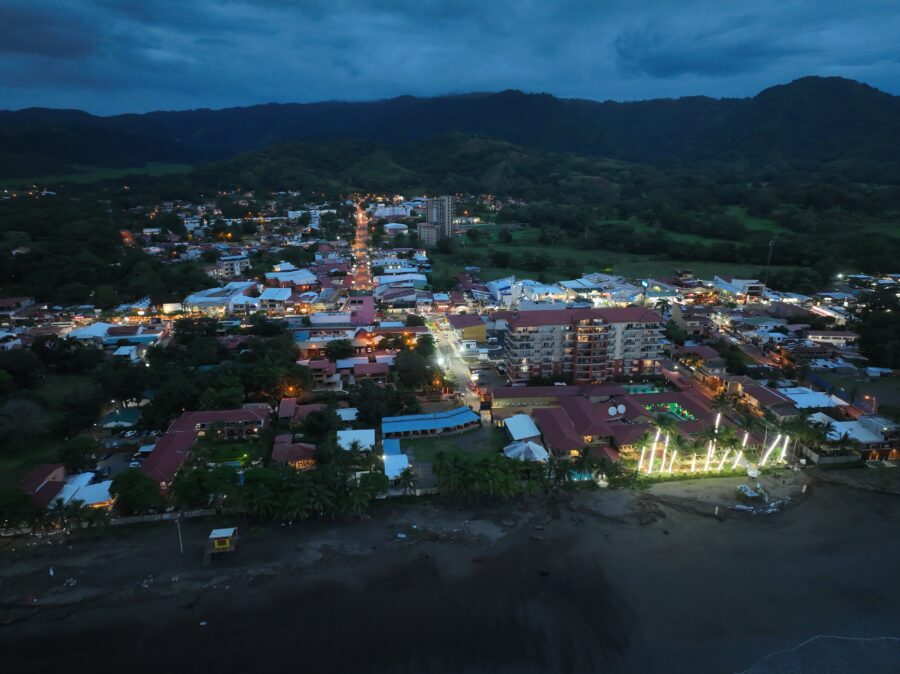
Jaco boasts a vibrant nightlife scene that caters to various tastes. The main street comes alive after dark, with bars, casinos, and clubs entertaining until late. Live music venues regularly showcase local talent and international acts.
The dining scene is equally impressive, with restaurants serving everything from traditional Costa Rican cuisine to international favorites. Seafood is a must-try, with many restaurants offering fresh catches daily. Budget-friendly sodas (local eateries) provide authentic Costa Rican meals at reasonable prices.
Street food vendors dot the beachfront, selling everything from coconut water to ceviche. Several upscale restaurants offer sunset views, creative cocktails, and gourmet dishes featuring local ingredients for a memorable evening.
Accommodation Options in Jaco

Jaco provides various accommodations for every budget, from luxury beachfront resorts to budget-friendly hostels. Many hotels feature pools, restaurants, and direct beach access, making them perfect for families or couples wanting convenience.
Vacation rentals have become increasingly popular, with condos and houses available throughout town. These options often provide more space and kitchen facilities, ideal for extended stays or larger groups.
Boutique hotels offer unique experiences with personalized service and distinctive designs. Many incorporate sustainable practices and showcase Costa Rican culture through decor and amenities.
Budget travelers will find plenty of hostels and guesthouses with communal spaces perfect for meeting other travelers. No matter where you stay, most accommodations are within walking distance of the beach, restaurants, and shops, making Jaco an easily navigable destination for all visitors.
See Related: Quepos vs Manuel Antonio: Key Differences to Know Before Your Costa Rica Vacation
Quepos: Gateway to Manuel Antonio
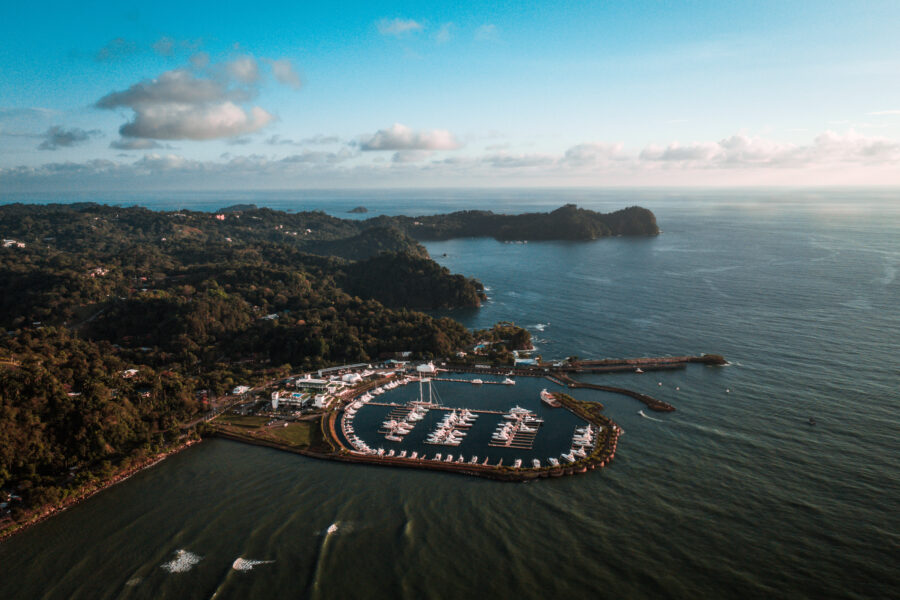
Quepos serves as the perfect entryway to Manuel Antonio’s natural wonders. This charming coastal town offers visitors a blend of local culture, exciting fishing opportunities, and convenient access to one of Costa Rica’s most famous national parks.
Cultural Experiences and Fishing Tours
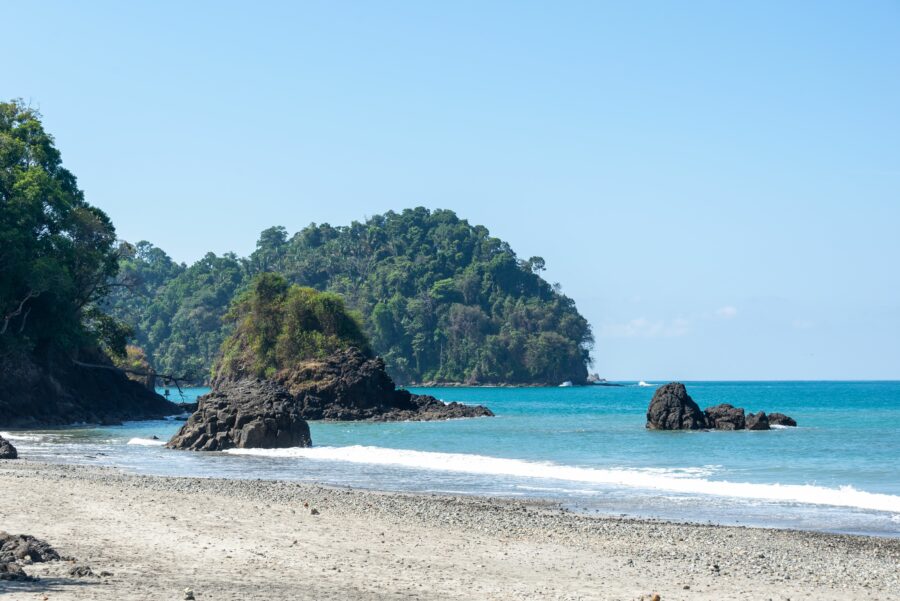
Quepos has built its reputation as one of Costa Rica’s premier sport fishing destinations. The waters off the coast are rich with marlin, sailfish, and mahi-mahi, attracting anglers from around the world. Many local tour companies offer half-day or full-day fishing expeditions for beginners and experienced fishermen.
Beyond fishing, the town offers authentic cultural experiences. The bustling Marina Pez Vela is a social hub where visitors can watch boats come in with their daily catch. The central market gives travelers a glimpse into local life, with vendors selling fresh produce and handcrafted goods.
Don’t miss the chance to try local cuisine at small family-owned restaurants called “sodas.” At reasonable prices, these eateries serve traditional Costa Rican dishes like casado (a plate of rice, beans, plantains, and protein).
Manuel Antonio National Park Proximity
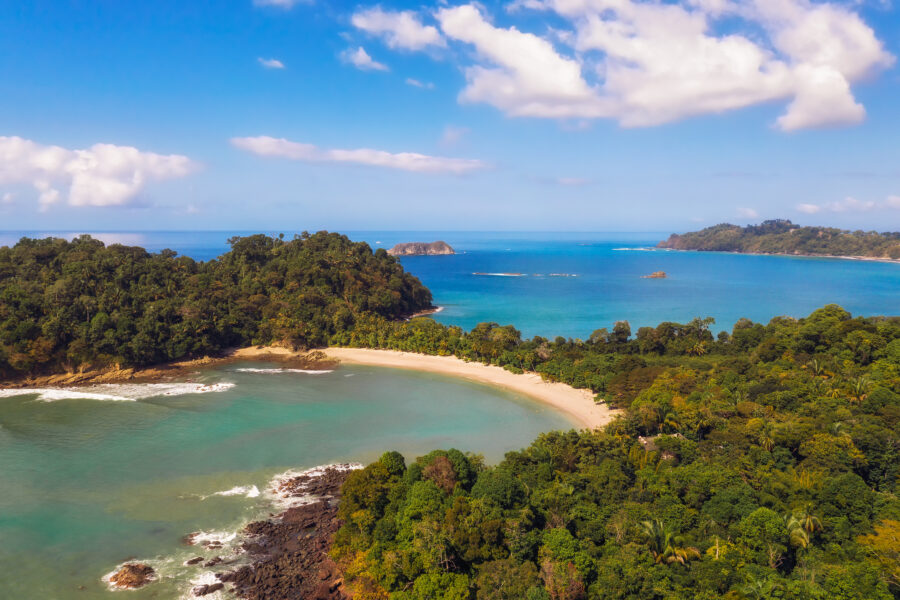
One of Quepos’ most significant advantages is its location, just minutes from Manuel Antonio National Park. This proximity makes it an ideal base for exploring the park’s incredible biodiversity.
The park is home to:
- Three-toed sloths
- White-faced capuchin monkeys
- Hundreds of bird species
- Stunning beaches
Regular shuttle buses run between Quepos and the park entrance, making transportation easy and affordable. Most visitors can reach the park 15-20 minutes from downtown Quepos.
The park’s entrance fee ($16 for adults) is well worth it for access to pristine beaches and wildlife viewing opportunities. Unlike Jaco, which offers more nightlife but less nature, Manuel Antonio provides an immersive rainforest experience steps from beautiful beaches.
Quepos Lodging and Rates
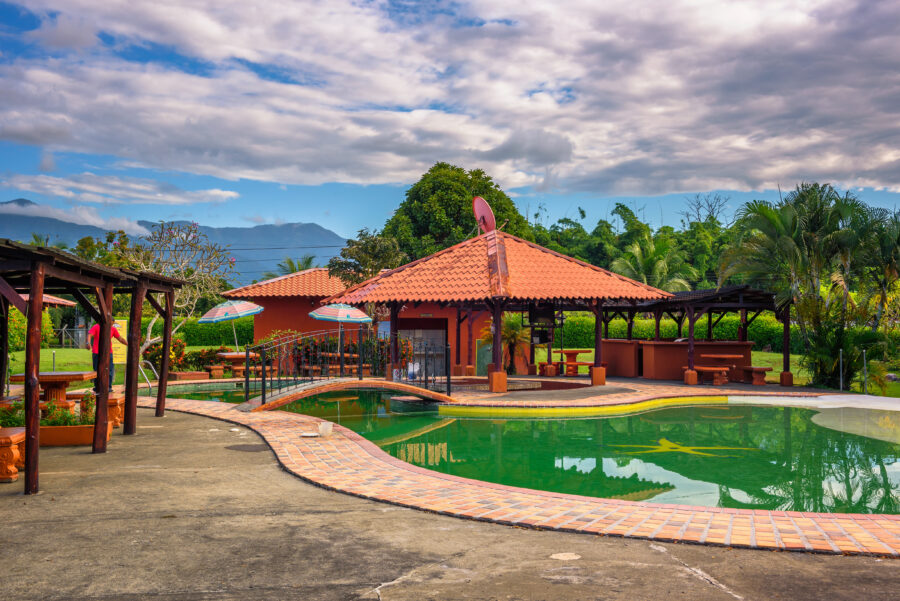
Accommodation options in Quepos tend to be more affordable than those directly in Manuel Antonio. Budget travelers will find comfortable hostels starting around $15-20 per night, while mid-range hotels average $60-100.
Many properties offer:
- Free breakfast
- Swimming pools
- Mountain or ocean views
- Shuttle service to Manuel Antonio
For extended stays, consider apartment rentals, which provide kitchen facilities and more space. Depending on location and amenities, these typically range from $50 to $ 150 per night.
The high season (December-April) sees rates increase by 20-30%, so book well in advance. The rainier green season (May-November) offers significant discounts and fewer crowds while still providing plenty of sunshine, especially in the mornings.
Planning Your Itinerary: Jaco to Quepos
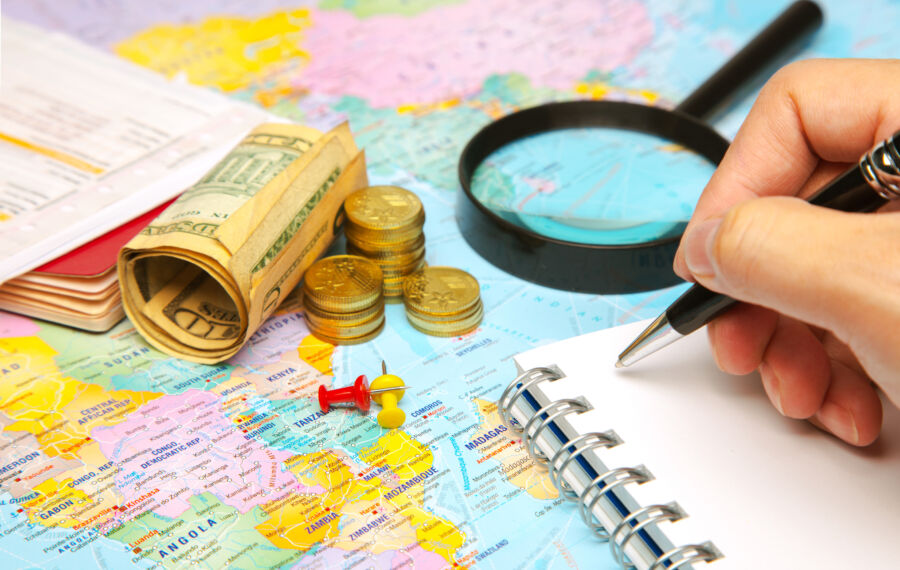
Traveling between Jaco and Quepos allows visitors to experience two distinct coastal areas with different vibes and attractions. The journey can be part of the adventure, with scenic coastal routes and plenty of stops.
Transportation Options and Tips

Getting from Jaco to Quepos is straightforward and takes 1-1.5 hours, depending on your transportation choice. The most common options include public buses, private shuttles, rental cars, and taxis.
Public buses run regularly between the towns, costing around $4-6 per person. They’re budget-friendly but make frequent stops.
Rental cars give you the most freedom to explore at your own pace. The coastal highway (Route 34) is well-maintained with stunning ocean views. Just be prepared for occasional steep sections and curves.
Private shuttles are comfortable and convenient. Depending on the group size, they range from $50 to $100. Many hotels can arrange these for you.
Taxis are also available, but expect to pay $80-100 for the one-way trip. Always confirm pricing before departing.
Adventure Tours: From Surfing to Rafting

Both areas offer excellent adventure activities, but with different specialties. Jaco is renowned for its surfing opportunities, which include consistent waves for beginners and experienced surfers alike. Local surf schools offer lessons for around $50.
Quepos is the gateway to Travel Tours, Activities, and excursions in Manuel Antonio National Park. Wildlife tours, canopy ziplines, and waterfall rappelling are all popular options.
Savegre River near Quepos offers world-class whitewater rafting with class II-IV rapids. Tours typically include transportation, equipment, and lunch.
ATV tours are available in both locations. They take you through jungle trails, beaches, and mountain viewpoints. These typically run $70-120 per person, depending on the duration.
Consider booking tours in advance during peak season (December-April) as popular options sell out quickly.
Family-Friendly Activities
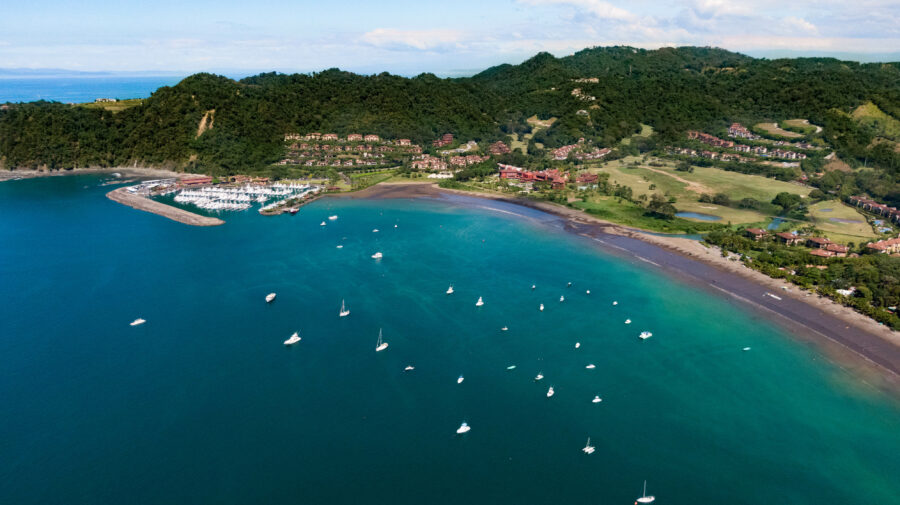
Families will find plenty to enjoy in both destinations. In Jaco, Playa Herradura offers calmer waters, safer for swimming than Jaco’s main beach, which has strong currents.
The Crocodile Bridge between Jaco and Quepos makes a fun stopover where kids can safely observe crocodiles from above. It’s free and usually takes just 15-20 minutes.
Manuel Antonio National Park near Quepos is perfect for families. It has easy walking trails and abundant wildlife. Children love spotting sloths, monkeys, and colorful birds.
The beaches at Manuel Antonio have gentler waves and tide pools, which are great for exploring. Pack plenty of water and snacks, as park options are limited.
Consider visiting the Butterfly Garden in Quepos or taking a gentle mangrove boat tour where guides point out wildlife at a relaxed pace, perfect for all ages.
Understanding the Costs

Traveling in Costa Rica requires careful budget planning, especially when choosing between popular destinations like Jaco and Quepos. Both areas offer different experiences at varying prices, and knowing what to expect can help you make the most of your vacation dollars.
Price Comparison: Jaco vs Quepos

Accommodations in Jaco tend to be slightly more affordable than in Quepos/Manuel Antonio. Budget hotels in Jaco start around $50-70 per night, while similar options near Manuel Antonio might cost $65-90. This price difference makes sense considering that Manuel Antonio is home to one of Costa Rica’s most famous national parks.
In Jaco, taxi fares typically run $2-5 for trips within town. In Quepos, expect similar rates, but trips to Manuel Antonio can cost $8-10 each way.
Though Quepos has a larger central market with fresher produce, grocery prices are comparable in both locations. If you’re staying longer, this could mean better value for self-catering in Quepos.
Beach access is free in Jaco, while Manuel Antonio National Park charges an entrance fee of about $16 per adult, which you should factor into your budget planning for Costa Rica.
Budget Planning for Tours and Activities
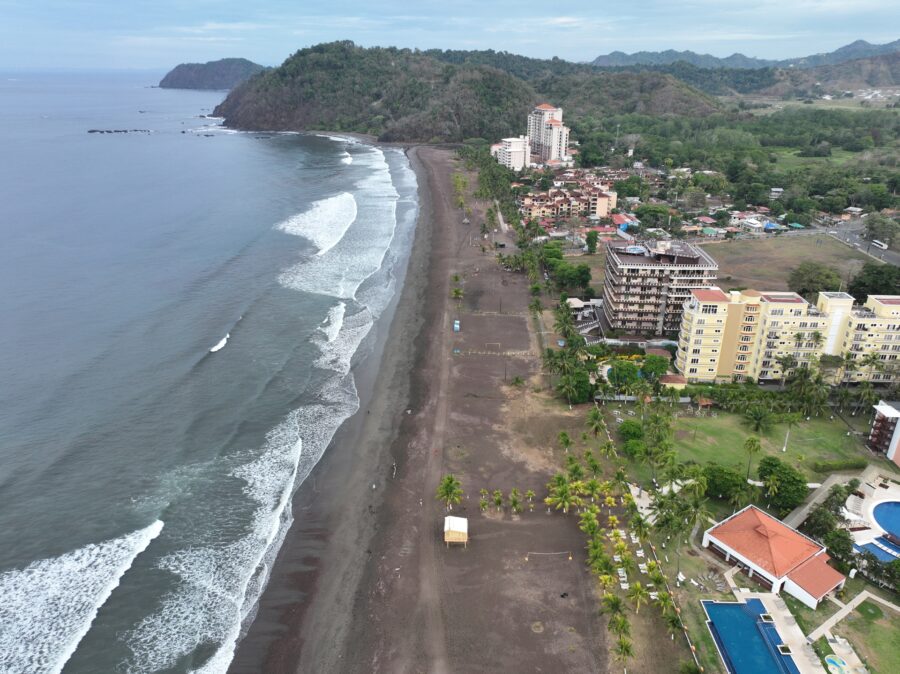
Tour prices vary slightly between the two locations. Surfing lessons in Jaco cost around $50-60 for a group lesson, reflecting its reputation as a surfing hotspot. In Quepos, similar lessons might run $60-70.
Wildlife tours are more abundant and sometimes less expensive in Quepos/Manuel Antonio, with basic guided tours starting at $45 compared to $55+ in Jaco. Manuel Antonio’s biodiversity often delivers more bang for your buck on nature tours.
Fishing charters are available in both locations, with half-day trips starting at $300-400. Jaco sometimes offers more competitive rates during the low season.
Adventure activities like zip-lining and ATV tours have similar pricing in both areas, typically ranging from $65-120, depending on the package length and inclusions.
Lunch and Dining: What to Expect

Both destinations offer a range of dining options, from budget to high-end experiences. Local sodas (small family restaurants) provide the best value in either location, with typical Costa Rican meals costing $5-8.
Jaco has more budget-friendly international options, with pizza slices for $3-4 and burger joints where you can eat for under $10. Quepos dining tends to skew slightly more upscale, especially restaurants catering to tourists near Manuel Antonio.
Both areas offer fresh, reasonably priced seafood. A fresh fish lunch might cost $12-15 in either location. However, beachfront dining comes at a premium, adding about 20-30% to your bill compared to restaurants a few blocks inland.
Happy hour specials are more prevalent in Jaco, with many bars offering 2-for-1 drinks from 4 to 6 p.m. If you plan accordingly, this can significantly reduce your beverage budget.
See Related: Most Affordable Summer Destinations
The Great Outdoors: Wildlife and Nature
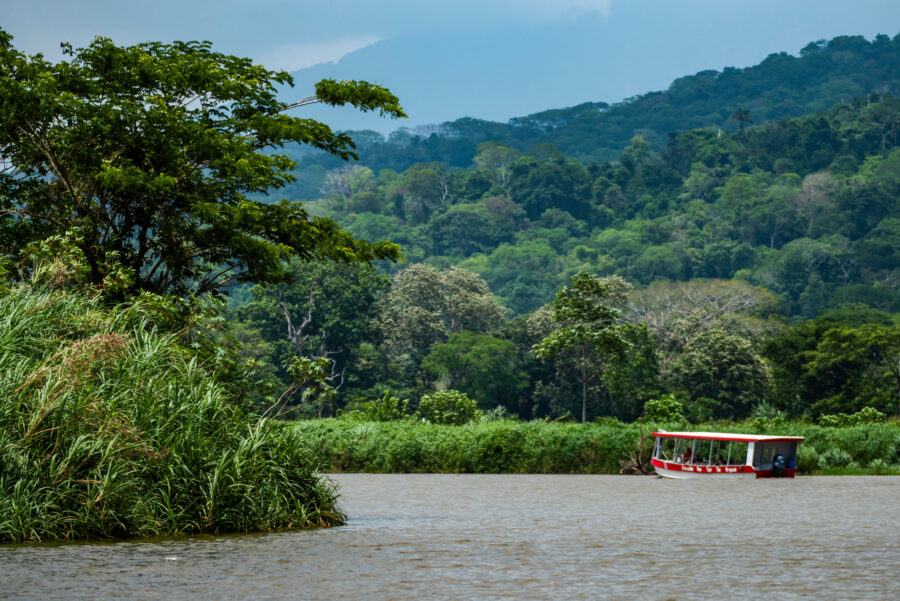
Costa Rica’s Pacific coast offers two distinctly different wildlife experiences. Jaco and Quepos each provide unique opportunities to explore natural habitats, though they differ significantly in biodiversity and conservation priorities.
Encountering Wildlife in Natural Habitats
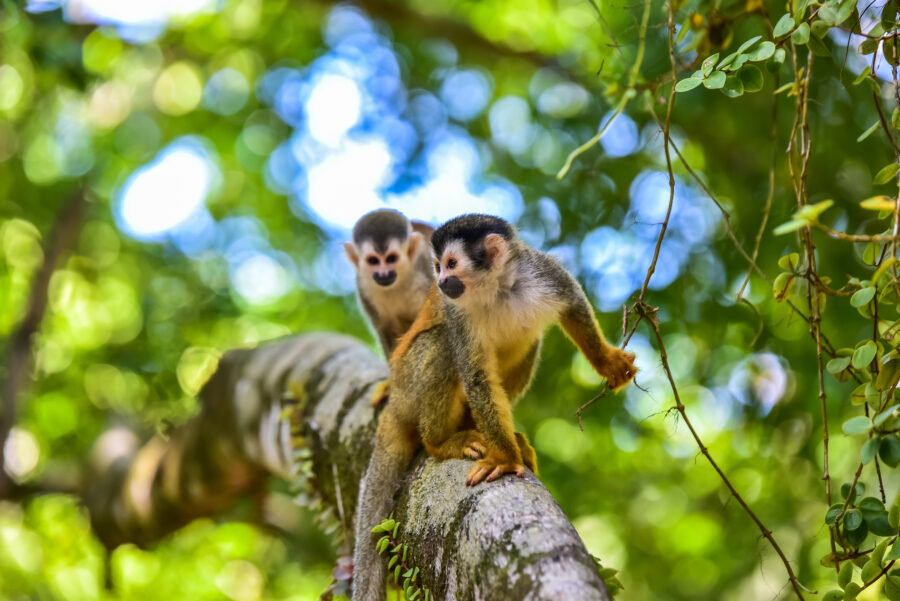
Manuel Antonio National Park near Quepos is a wildlife lover’s paradise. Despite being Costa Rica’s smallest national park, it packs incredible biodiversity into its borders. Visitors regularly spot three species of monkeys (squirrel, howler, and capuchin), two-toed and three-toed sloths, and countless tropical birds.
Hiking trails wind through lush rainforest before opening to stunning beaches. Many travelers report seeing more wildlife here in a few hours than elsewhere in weeks of travel.
Jaco’s wildlife viewing is more limited, though not absent. The nearby Carara National Park offers good birdwatching, including scarlet macaws that fly between the park and coastal areas.
For the best wildlife experiences, guided tours with naturalists are essential. They spot camouflaged creatures most visitors would miss entirely.
Conservation Efforts and Eco-Tourism
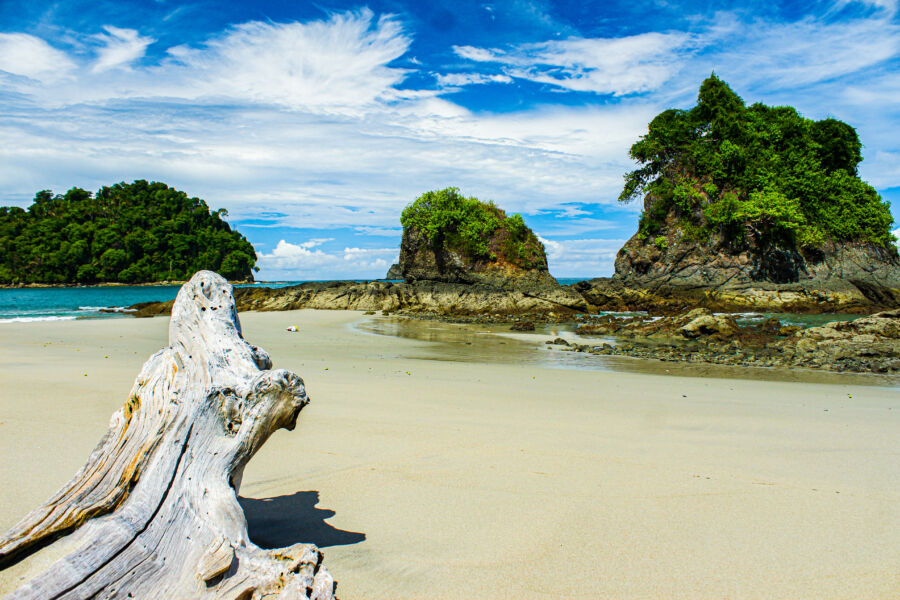
Quepos and Manuel Antonio have embraced eco-tourism as a conservation strategy. Many lodges and tour operators contribute to protection efforts and educate visitors about fragile ecosystems.
The area faces challenges from tourism development, but significant conservation work continues. Several wildlife rehabilitation centers rescue and treat injured animals, some offering educational visits.
Jaco has had a different relationship with nature conservation. Its rapid development as a tourist destination resulted in less preserved natural space within the town.
Improvement has been seen in recent years, though. Beach cleanup initiatives, turtle protection programs, and sustainable tourism practices are gaining momentum in Jaco.
Both locations offer opportunities to participate in conservation through volunteer programs. Activities range from beach patrols during turtle nesting season to reforestation projects. These hands-on experiences connect travelers to Costa Rica’s conservation ethic while making a real difference.
Essential Travel Tips
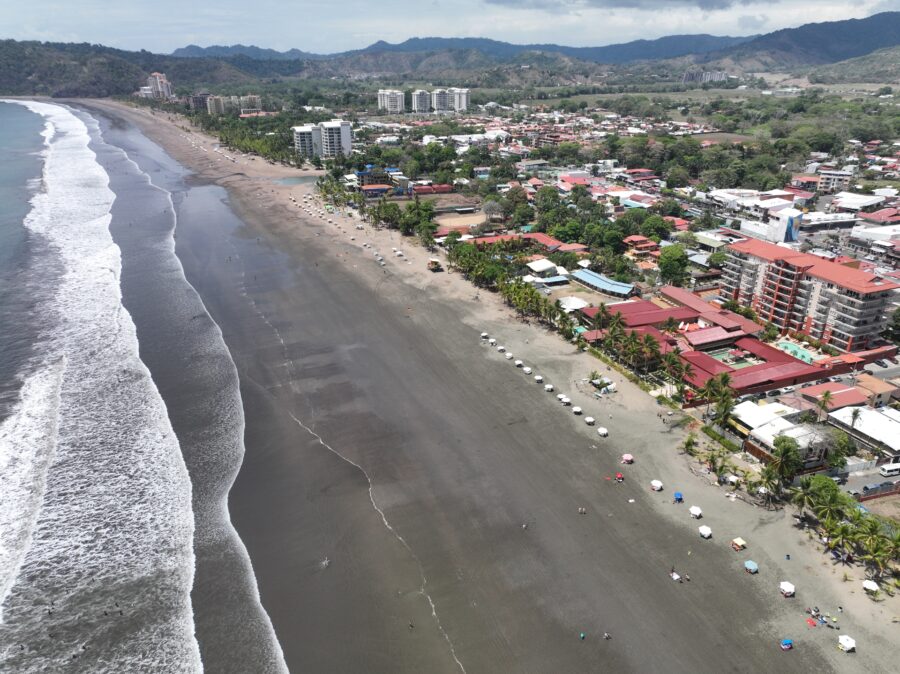
Visiting Costa Rica’s beach towns requires some planning to make your trip go smoothly. Weather patterns, proper packing, and communication strategies can make or break your vacation experience in Jaco or Quepos.
When to Visit: Best Seasons for Jaco and Quepos
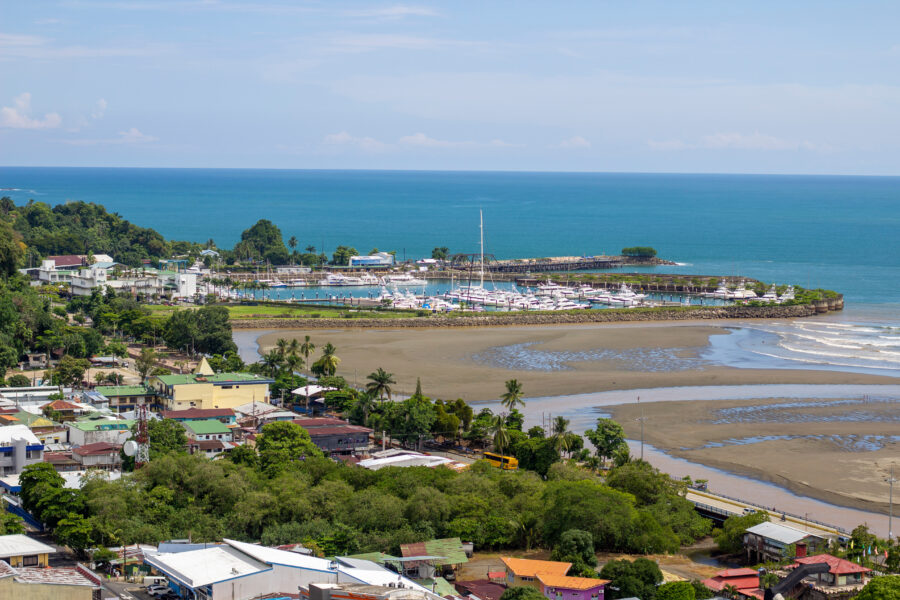
The dry season from December to April offers the best weather for visiting Jaco and Quepos. During these months, travelers enjoy sunny days perfect for surfing in Jaco or exploring Manuel Antonio National Park near Quepos.
The green season (May to November) brings afternoon showers but lower prices and fewer tourists. September and October see the heaviest rainfall, with some businesses in Quepos closing temporarily.
Wildlife enthusiasts can visit Quepos between December and March to see migrating whales. Surfers should note that Jaco’s best waves typically come between June and August when southern swells arrive.
Temperature stays fairly consistent year-round (75-90°F), so your visit timing depends more on rain preferences than temperature concerns.
Packing Essentials: Camera, Hat, and More

A good waterproof camera is essential for capturing Jaco’s stunning sunsets or Quepos’ wildlife encounters. Consider bringing:
- Sun protection: Wide-brimmed hat, reef-safe sunscreen (SPF 50+), and sunglasses
- Footwear: Water shoes for rocky beaches, hiking sandals for trails
- Clothing: Quick-dry fabrics, light rain jacket (even in dry season), swimwear
- Insect repellent: Essential for Quepos’ jungle areas
- Reusable water bottle: Tap water is generally safe in both towns
Remember to pack light! Most hotels in both Jaco and Quepos offer laundry services.
A dry bag protects electronics during boat trips or unexpected downpours. Many visitors forget this item but wish they hadn’t.
Language and Communication: The Role of a Bilingual Guide
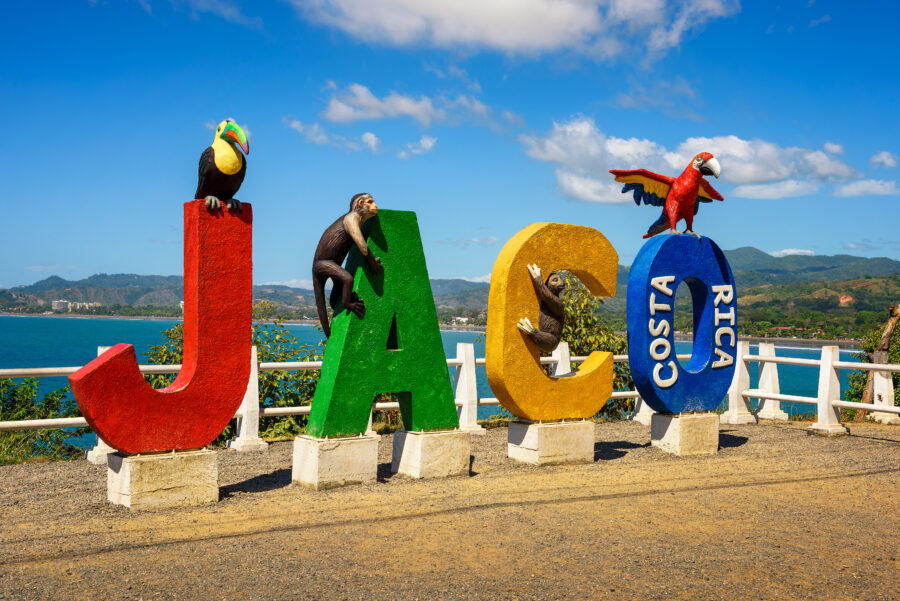
While many tourism workers in Jaco and Quepos speak some English, hiring a bilingual guide enhances your experience tremendously. Local guides offer cultural insights and spot wildlife you might otherwise miss in Quepos’ forests.
Learning basic Spanish phrases shows respect to locals. Simple greetings like “Buenos días” (good morning) and “Gracias” (thank you) go a long way.
Cell service is generally reliable in both towns, but download offline maps before venturing to remote areas. Many restaurants and hotels offer free WiFi, though connections can be spotty during storms.
WhatsApp is widely used in Costa Rica for communication. Consider downloading this app before your trip to contact tour operators, guides, and accommodations in Jaco and Quepos.
See Related: Jaco vs San Jose: Essential Differences Every Costa Rica Traveler Should Know
Frequently Asked Questions
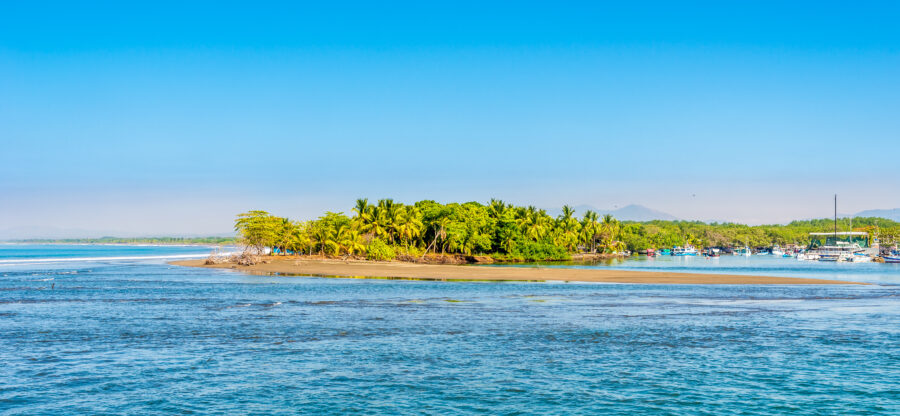
Travelers choosing Jaco and Quepos often have specific concerns about which destination suits their vacation needs. Both locations offer unique Costa Rican experiences but differ in several key aspects.
What are the main differences between Jaco and Quepos for a vacationer seeking an authentic Costa Rican experience?
Jaco offers a more developed tourist infrastructure with a bustling atmosphere, while Quepos provides a gateway to Manuel Antonio’s natural wonders. The beaches tell different stories, too. Jaco features dark grey sand beaches with excellent surf conditions, perfect for wave riders but not always ideal for swimming.
Quepos and nearby Manuel Antonio offer better wildlife viewing opportunities and more pristine beaches. You’re likelier to spot monkeys, sloths, and colorful birds in Manuel Antonio National Park than in Jaco.
The local vibe differs, too. Jaco has a more international feel with plenty of expats, while Quepos maintains more traditional Costa Rican culture.
Which area offers better adventure tourism opportunities, Jaco or Quepos?
Both areas excel in adventure tourism but offer different experiences. Jaco is renowned for its surfing opportunities with consistent waves that attract beginners and pros alike. The area also offers ATV tours, ziplines, and horseback riding.
Quepos shines with its proximity to Manuel Antonio National Park, providing world-class hiking, wildlife viewing, and canopy tours. The waters near Quepos are also famous for sportfishing, particularly for sailfish and marlin.
Due to its more transparent waters and healthier marine environments, Quepos offers better snorkeling and diving opportunities for water adventures beyond surfing.
Considering safety and variety, how does the nightlife compare to that of Jaco and Quepos?
Jaco boasts a more vibrant nightlife scene with numerous bars, clubs, and casinos that stay open late. The town has a reputation for being more party-oriented, with options for every taste and budget.
Quepos has a more subdued nightlife, with fewer venues that generally close earlier. According to the search results, Quepos’ nightlife is primarily frequented by locals and not particularly welcoming to tourists.
Safety considerations differ as well. Jaco’s touristy areas are generally safe but require standard precautions, while visitors should avoid partying in Quepos town and stick to Manuel Antonio for evening entertainment.
In terms of proximity to natural attractions, how do Jaco and Quepos measure up?
Quepos wins hands down for nature lovers with its direct access to Manuel Antonio National Park, one of Costa Rica’s most biodiverse reserves. The park features stunning beaches, hiking trails, and almost guaranteed wildlife sightings.
While not adjacent to a national park, Jaco is closer to other popular attractions like Carara National Park and the Tarcoles River, famous for its crocodile population. It’s also a shorter drive from San Jose, making it more accessible for those with limited time.
Both areas offer access to waterfalls, rainforests, and marine environments, but Quepos provides a more immediate immersion in pristine nature.
What are the accommodation options in Jaco compared to those in Quepos?
Jaco provides a broader range of accommodation options, from budget hostels to luxury condos and hotels. The town’s developed tourism industry means more choices at competitive prices, especially during non-peak seasons.
Quepos and Manuel Antonio tend toward boutique hotels and eco-lodges, many offering spectacular ocean or jungle views. While some budget options exist, the area generally skews toward mid-range and luxury accommodations.
Vacation rentals are abundant in both locations, but Jaco offers more urban-style condos while Quepos features more secluded jungle houses and villas built into the hillsides.
Can visitors expect a significant difference in the local cuisine experiences between Jaco and Quepos?
Both areas serve excellent Costa Rican cuisine, but Quepos offers a more authentic seafood experience due to its working fishing port. Fresh catches arrive daily, making seafood restaurants in Quepos particularly noteworthy.
Jaco features a more international dining scene with everything from Italian to Japanese cuisine alongside traditional Costa Rican sodas (small family restaurants). The greater expat population has influenced the variety of food options.
Price points differ slightly, too. Jaco offers more budget-friendly eateries and street food, while Quepos and Manuel Antonio have more upscale dining options catering to the eco-tourist crowd.

